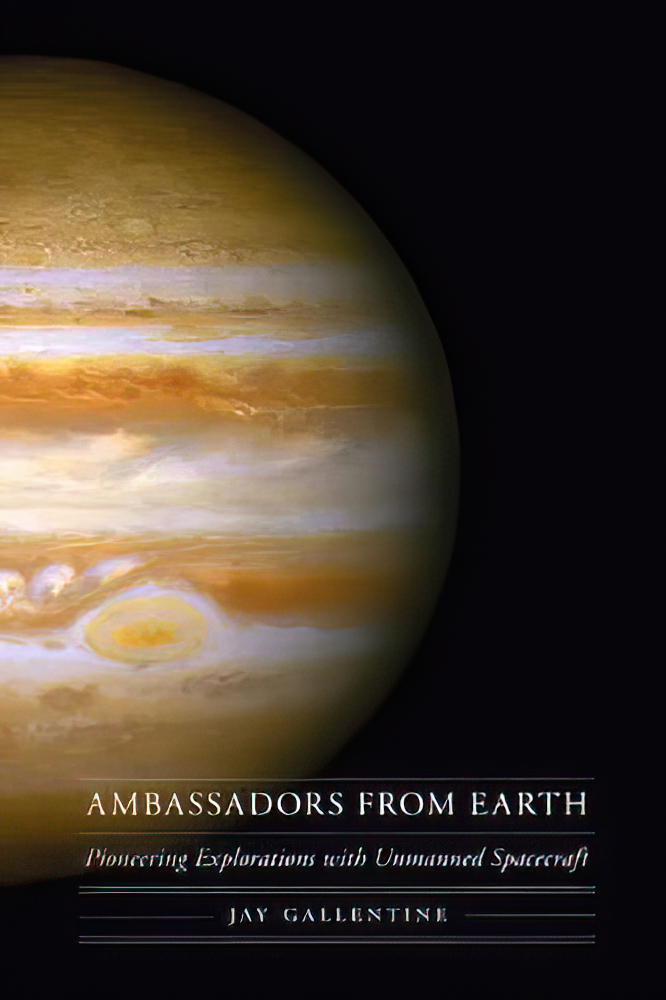 Story: The history of outer solar system exploration is covered in depth, from the earliest notional studies of robotic exploration beyond Mars to the missions that actually made it off the drawing board and into space – Pioneers 10 and 11, Voyagers 1 and 2, and their progeny such as Galileo and Cassini.
Story: The history of outer solar system exploration is covered in depth, from the earliest notional studies of robotic exploration beyond Mars to the missions that actually made it off the drawing board and into space – Pioneers 10 and 11, Voyagers 1 and 2, and their progeny such as Galileo and Cassini.
Review: This is the book I’ve been looking for and waiting for. There are books aplenty – both lovely and lacking – on the Voyager missions to the outer planets, but while JPL’s machine marvels continue functioning to this day, outlasting interplanetary missions launched both before and since 1977, they were not the first. This book covers the ambitious Pioneer missions to Jupiter and Saturn that preceeded (and, in many ways, paved the way for) the Voyagers, and revealed that there was much to be gained by going and – at least for a while – staying at Jupiter and Saturn.
Furthermore, this book reveals, through copious interviews, remembered conversations, and documentation, how these missions interacted with one another: the Pioneers’ casual trip through the asteroid belt was by no means a given, and there was a difference of opinions as to whether they’d emerge unscathed or be pulverized by slamming into bodies too small and faint to detect from Earthbound telescopes. The very idea of actually sending something to Jupiter was just this side of science fiction.
Furthermore, when the Pioneers got there, the giant planet’s supercharged magnetosphere nearly fried their puny Earth electronics, and the Voyager mission planners and engineers took note, beefing up their spacecrafts’ resistance to radiation prior to launch. So many histories of various missions seem awfully compartmentalized, failing to reveal this rich context: space exploration is an incremental process, each mission building upon the last.
And finally, the personalities driving every mission back on Earth are covered. Dr. James Van Allen – the same one who discovered the protective radiation belts swaddling Earth and protecting it from the solar wind – features prominently throughout the book as he theorizes about similar belts surrounding Jupiter and eventually proposing an instrument to be placed on Pioneers 10 and 11 to test those theories. Also reappearing throughout the book are Mike Minovitch, a former JPL employee who demands credit for “inventing” a concept called gravity thrust (what we today call gravity assist maneuvers), and Gary Flandro, a JPL physicist who expanded that theoretical concept into practical application, making the Voyager missions possible.
There’s plenty of human drama behind every mission, as various players in the various missions weigh the risks and rewards to their careers, personal lives, and egos. That information is conveyed in a manner that makes Ambassadors From Earth read more like a novel of ambitions and relatable conflicts than a dry, technical science book – and all without passing judgement on any of its “characters”. It’s a fantastic read, and one that makes me want to pick up more of the volumes in the not-cheap-to-acquire Outward Odyssey: A People’s History of Spaceflight series.
Released: November 1, 2009
Author: Jay Gallentine
Publisher: University of Nebraska Press
Pages: 544

